(March 22, 2024) "I grew up in India where my family owned a shoe shop. It was there that I learned the basics of business, developed the ability to diagnose even the most complex business situations, and honed my work ethic. These foundational skills have been instrumental in my journey to success," shared Indian origin business consultant Ram Charan in one of his posts. Dubbed as ‘the most influential consultant alive’ by Fortune Magazine, the management guru has coached top companies, CEOs, and boards throughout his illustrious career spanning more than 46 years. Before embarking on his consulting journey, Ram had worked as assistant Professor at Harvard Business School and Northwestern University, and later as a Professor at Boston University. Over the years, Ram has established himself as one of the most sought-after business speakers, addressing distinguished audiences worldwide. His words of advice are globally recognised as relevant, practical, actionable, and entertaining at the same time. Our lives are a summation of our experiences. Every experience we have ever been through impacts us. Ram Charan Acknowledging his legacy, Pune-based, MIT World Peace University (WPU), recently inaugurated the Ramcharan School of Leadership (RSoL), with the aim to nurture the next generation
cknowledging his legacy, Pune-based, MIT World Peace University (WPU), recently inaugurated the Ramcharan School of Leadership (RSoL), with the aim to nurture the next generation of corporate leaders by imparting the wisdom and insights of the corporate guru.
[caption id="attachment_50205" align="aligncenter" width="615"]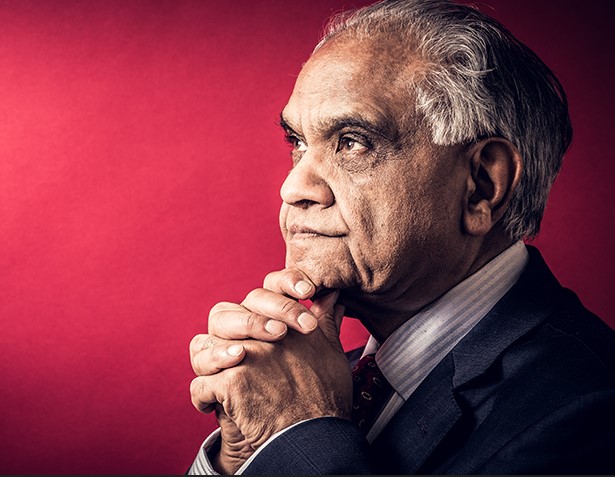 Ram Charan[/caption]
Ram Charan[/caption]
Flying high
Last year, the American Airlines, Delta Air Lines and United Airlines acknowledged the 85-year-old management guru for being one of their frequent fliers. “People who know me know my routine. I travel light and focus on my clients. I am not concerned with material matters,” he remarked.
Thanking the three airlines he added:
Now I have found out I travelled over 10 million miles with American Airlines. Over 7 million miles on Delta. Countless more miles with other airlines. This is a reflection of my commitment to my clients and the trust they place in me. Here is what I have to say — I am ready to fly more and keep working!
Impressive associations
Ram Charan’s consultancy portfolio boasts a diverse array of clients, including industry giants like Toyota, Bank of America, Key Bank, ICICI Bank, Aditya Birla Group, Novartis, Max Group, Yildiz Holdings, UST Global, Fast Retailing (Uniqlo), Humana, and Matrix amongst others.
He has imparted business lessons to emerging business leaders through in-house executive education programs. Several leaders coached by him have ascended to CEO positions.
Recognised for his exceptional teaching prowess, Ram Charan has won several awards and holds the title of the Distinguished Fellow of the National Academy of Human Resources, USA. Additionally, he has contributed his expertise to the Blue-Ribbon Commission on Corporate Governance, a committee established by The New York Stock Exchange, and the National Association of Securities Dealers to improve the effectiveness of corporate audit committees.
https://www.youtube.com/watch?v=2nQtSUMVMME
Ram has garnered thousands of admirers along the way, including Jack Welch, former CEO of GE, who praised the business consultant in an interview, saying, “He has the rare ability to distil the meaningful from the meaningless and transfer it to others in a quiet, effective way.”
The appreciation is mutual. In a recent post, Ram Charan emphasised, ‘reflection is the cornerstone of growth for both life and businesses. “Embrace each failure as a learning opportunity,” he advised, adding, “Leaders like Jack Welch exemplified this by mastering the basics and focusing on solutions, not just problems."
Regular business reviews aren't just evaluations. You have the chance to build culture and confidence.
Ram Charan
Man with a wealth of business insights
Ram Charan has shared his business insights through writing, coaching and business consultancy. With over 30 books under his belt, his works have reached more than four million readers across a spectrum of languages. Three of his books secured positions on the list of Wall Street Journal’s bestsellers. His collaborative book with former Honeywell CEO Larry Bossidy titled ‘Execution: The Discipline of Getting Things Done’ spent over 150 weeks on the prestigious New York Times bestseller list.
A prominent figure in business insights on social media, Ram Charan also curates a monthly newsletter titled 'Ram Charan’s Corporate Advice,' offering continuous guidance and insights to his audience. His straightforward lessons, such as advice to readers like 'Prepare yourself for unforeseen challenges,' drawing parallels to the rigorous training of Olympic athletes and how ‘their confidence is a result of rigorous practice’ motivate professionals to keep on polishing their craft.
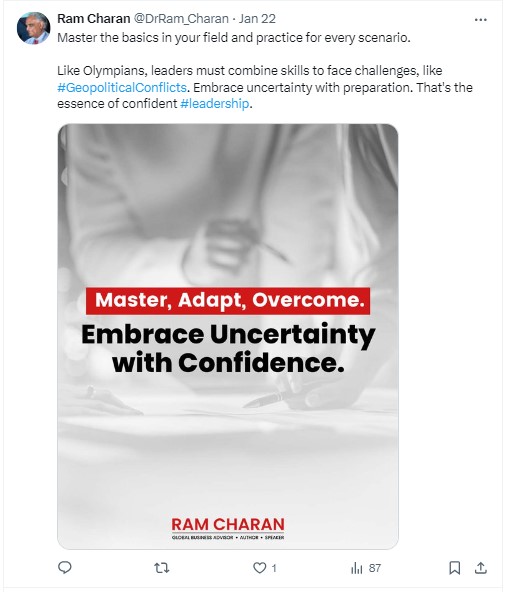
Through examples of geopolitical crises like the Russia-Ukraine conflict, U.S.-China relations, and global leadership changes, he emphasises the importance of readiness in navigating complex business landscapes. These are the kinds of tips that prompt business leaders to pause, reflect, and chart their course in their careers, every day.
Remember these two tools — preparation and practice. The more you engage in mental rehearsals for various scenarios, the more intuitive and confident you become in tackling real-world challenges. Develop a mindset that embraces uncertainty. Prepare for it with foresight and agility. This is what defines true leadership.
Ram Charan
Purpose – to help others succeed
Ram's influence on the lives of CEOs and the functioning of their companies has been deep. He is not merely seen as a consultant but as a guru and corporate sage with unparalleled access to boardrooms across the globe with lasting relationships with powerful CEOs.
The management guru maintained a hectic schedule throughout. Despite earning a substantial consulting fee, he went for the longest time without owning a car or even learning to drive, as he was constantly hopping from one flight to another across the globe.
He rarely spent more than two nights in a single city. Living a minimalist lifestyle came naturally to him, as he has always been single. Before his consultancy days, Ram Charan resided in dormitories, and before his professorship, he lived in YMCA accommodations. These modest settings were comfortable for a man driven not by personal success, but by a deeper purpose in life.
Ramcharan School of Leadership
The Ramcharan School of Leadership (RSoL) started by Pune-based MIT World Peace University (WPU) offers a diverse range of degree programs from bachelors to doctorate levels. The curriculum, designed by industry experts in collaboration with global universities, equips students with essential leadership skills for professional advancement and social impact.
[caption id="attachment_50216" align="aligncenter" width="679"]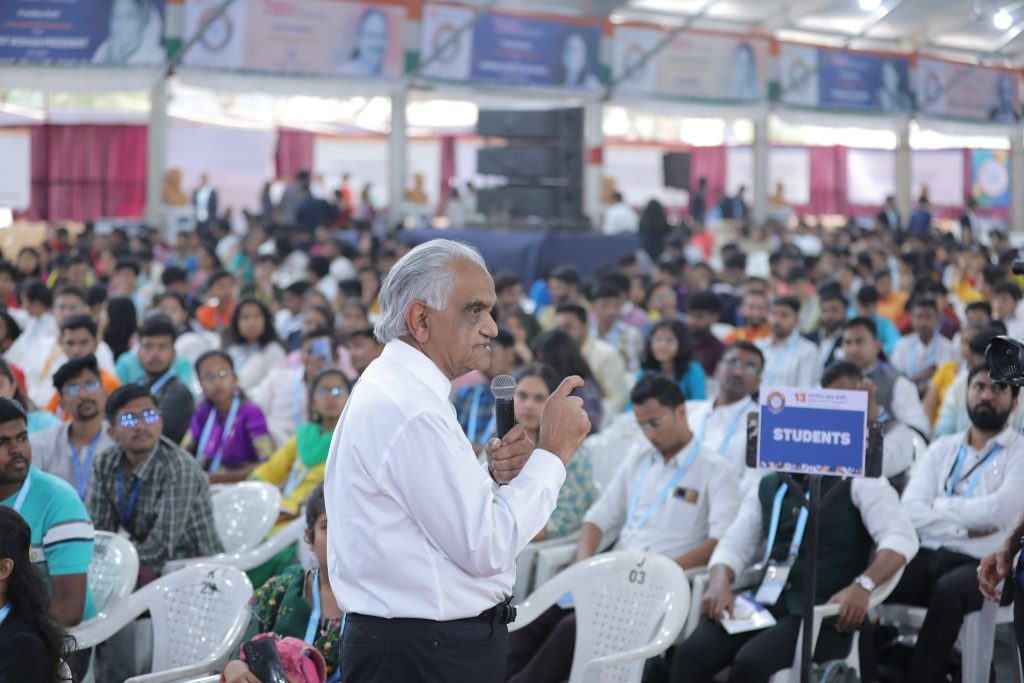 Ram Charan at MIT World Peace University (WPU)[/caption]
Ram Charan at MIT World Peace University (WPU)[/caption]
Sharing his happiness on this development, the business guru remarked, “I have been so honoured to have a school in my name in India, where I am working to help MBAs and BBAs with their academic pursuits. I have had many interactions with students over the past few weeks. They have taught me many lessons, as I have also shared with them my experience.”
From India to USA
The business consultant comes from a hard-working family without much access to education. At a young age, he learned discipline. He used to open the family shoe shop at seven in the morning, attended to customers before his brothers came in, and then went to school, and would return directly from there to the shop at four in the evening. When there were no customers, he used to do his homework.
They still have the shoeboxes where I used to solve my Arithmetic work. That was where I learned how to diagnose a problem. I learned to work hard but I also learned that I loved business. It was this passion that fuelled my work ethic.
Ram Charan shared in one of his posts
After completing engineering at Banaras Hindu University in 1959, he worked for some time in India. His bosses recognised his business talent, and looking at his leadership skills encouraged him to develop it through further studies. This motivated the young engineer to earn an MBA and a doctorate degree as a Baker Scholar from Harvard Business School, from where he graduated with distinction.
https://www.youtube.com/watch?v=tebqr8VW1nI&t=2s
Looking at India with pride and optimism
The visionary leader is proud about the growth story of his country of origin.
India is on fire. It's going to grow in multiple ways.
Ram Charan said in an interview
“I am very bullish on India. It has a robust path to economic growth. Ever since independence, the Government has demonstrated that its apparatus can focus on achieving major milestones. India has revamped the ease of doing business and is the place where the next growth story is happening,” he remarked with optimism.
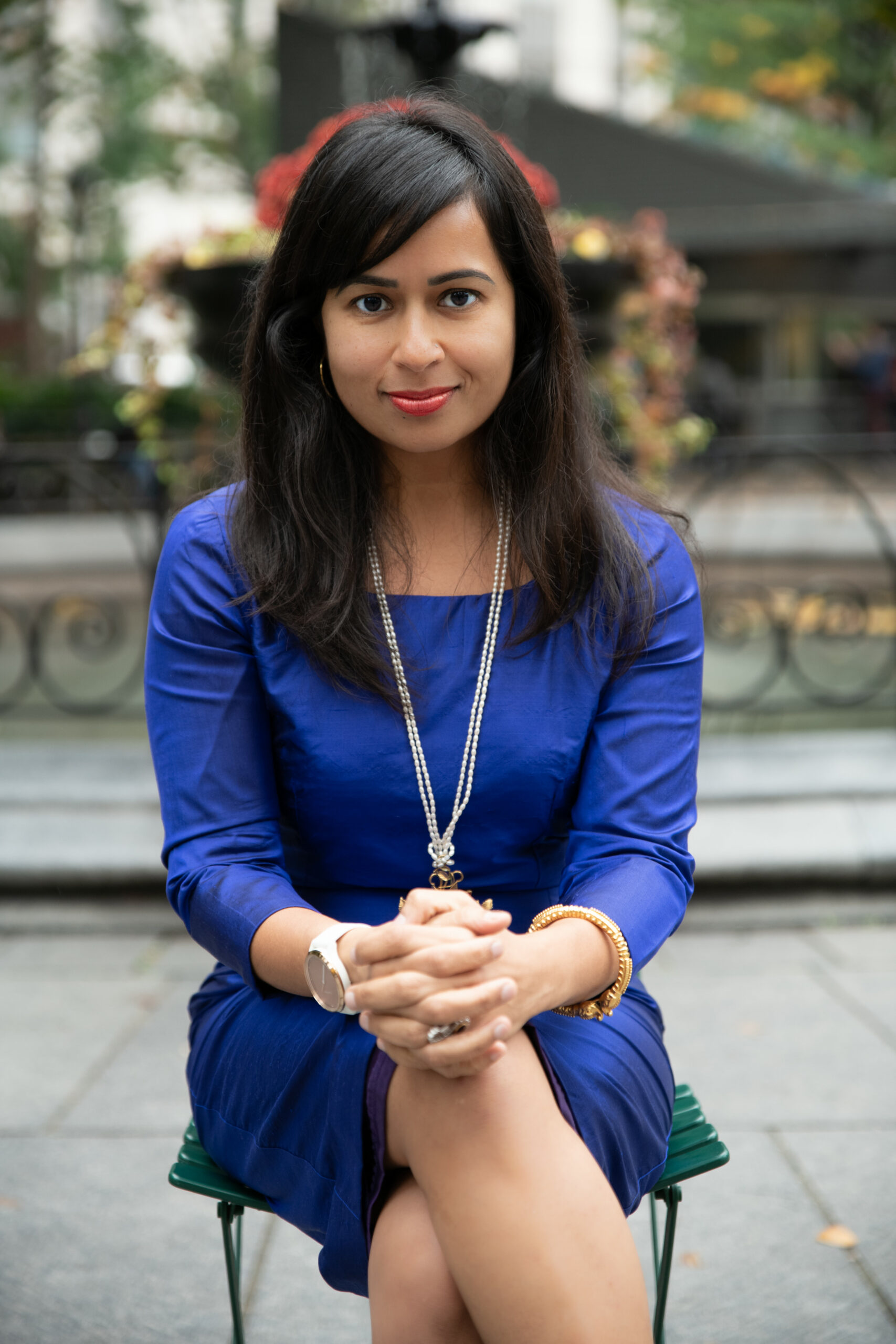




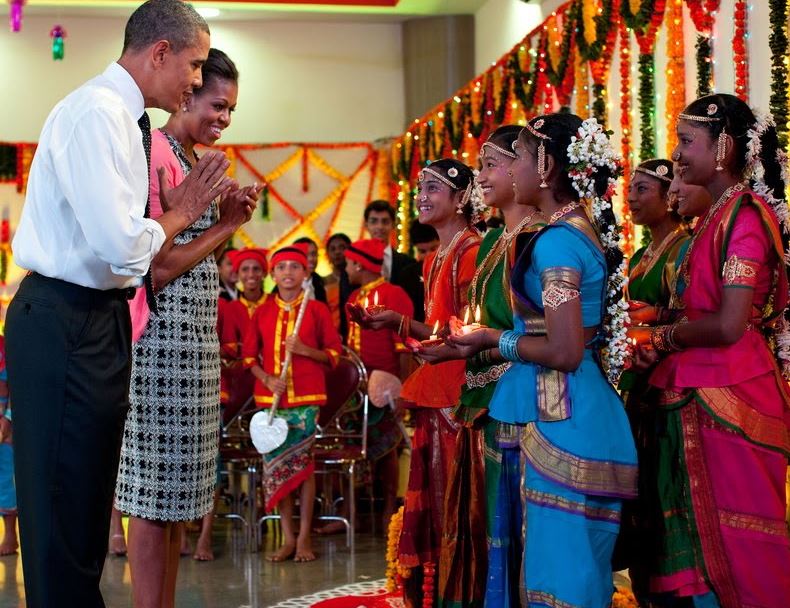 Obamas celebrating Diwali in 2010[/caption]
Obamas celebrating Diwali in 2010[/caption] A digital mural on One World Trade Center in 2021[/caption]
A digital mural on One World Trade Center in 2021[/caption] Celebrities and Influencers of the diaspora[/caption]
Celebrities and Influencers of the diaspora[/caption]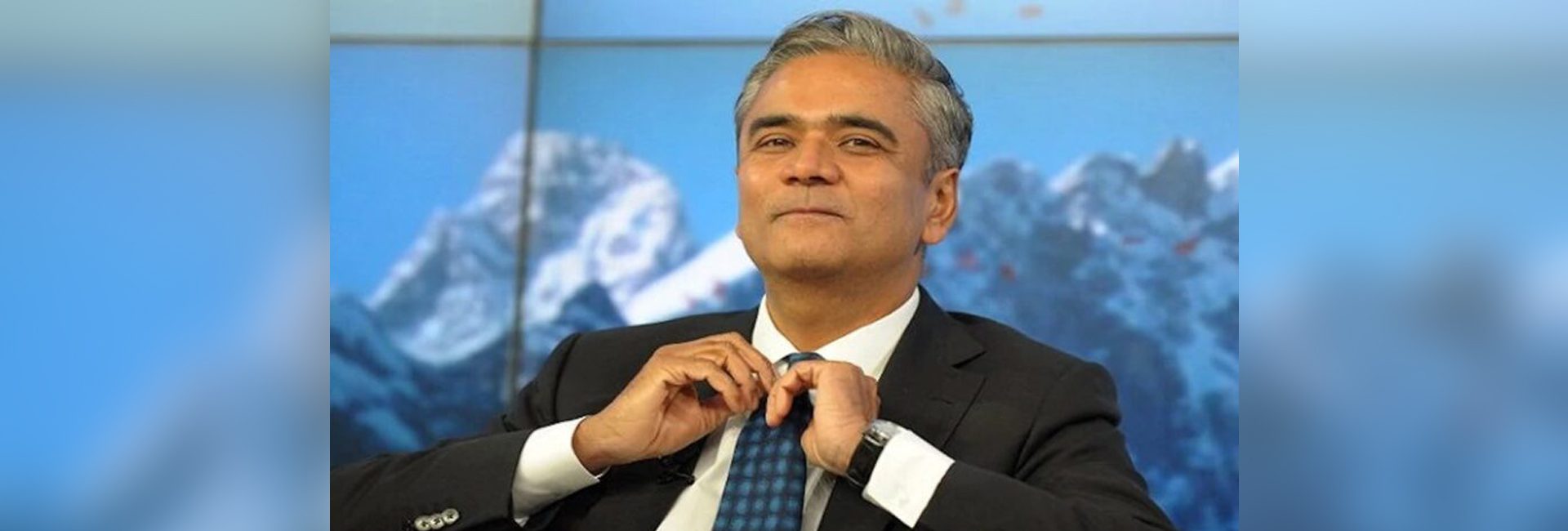
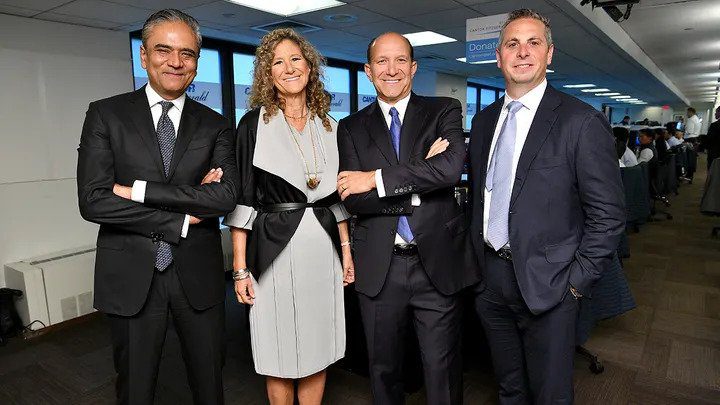 Anshu Jain, Edie Lutnick, Howard Lutnick, and Jim Buccola during a charity event in 2019[/caption]
Anshu Jain, Edie Lutnick, Howard Lutnick, and Jim Buccola during a charity event in 2019[/caption] Jain during a meeting with Prime Minister Narendra Modi[/caption]
Jain during a meeting with Prime Minister Narendra Modi[/caption]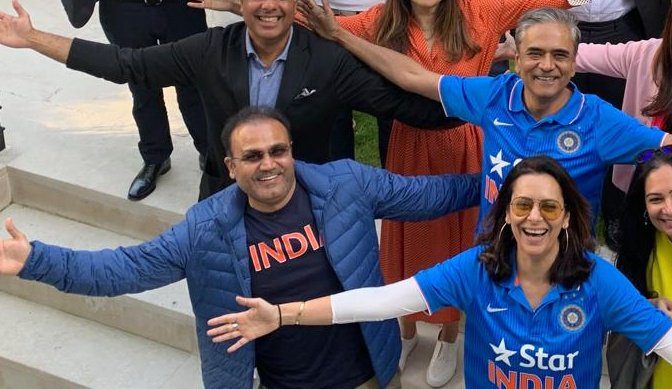 Jain, with his wife Geetika, and dear friend, former Indian cricketer, Virender Sehwag[/caption]
Jain, with his wife Geetika, and dear friend, former Indian cricketer, Virender Sehwag[/caption]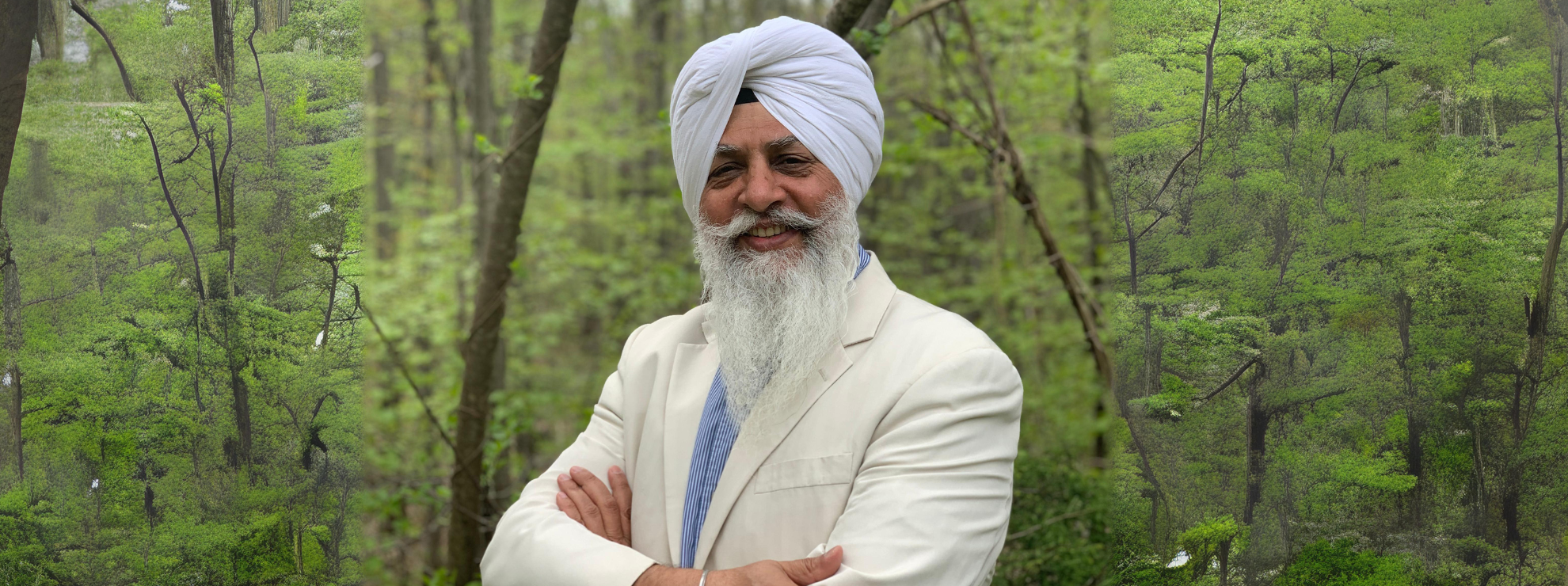


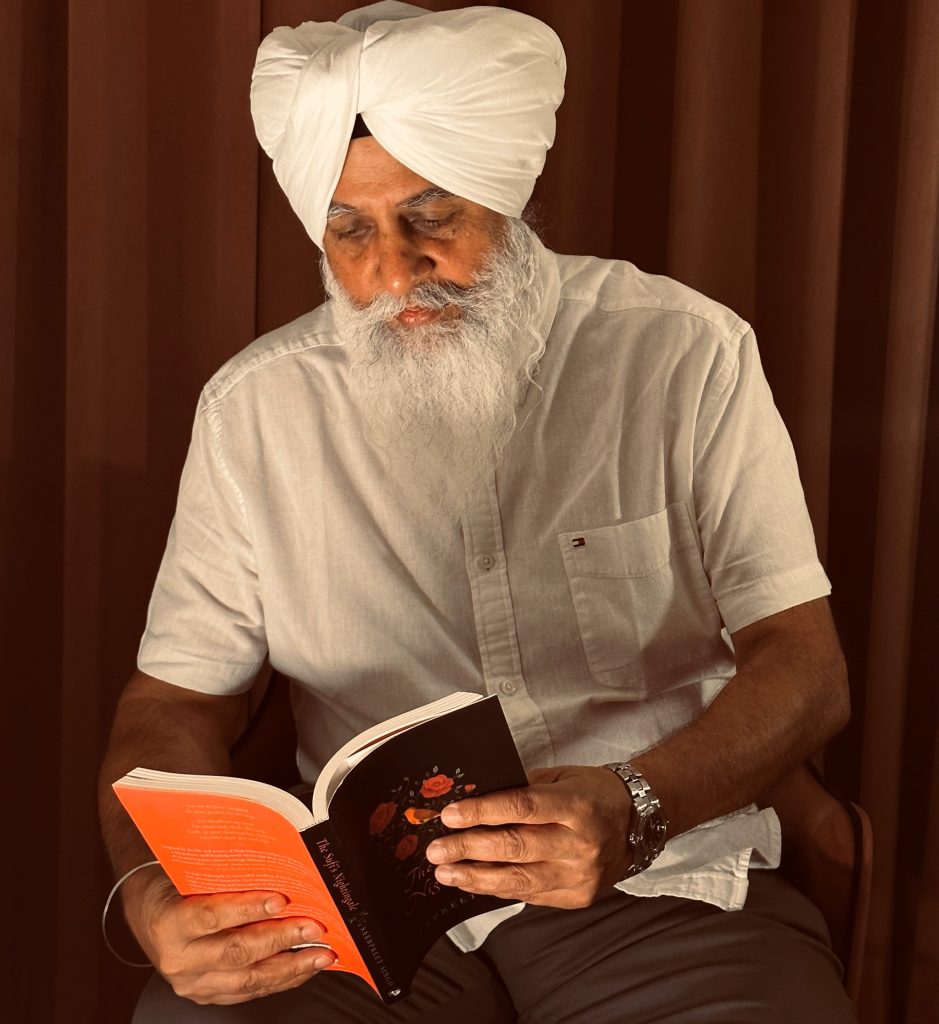
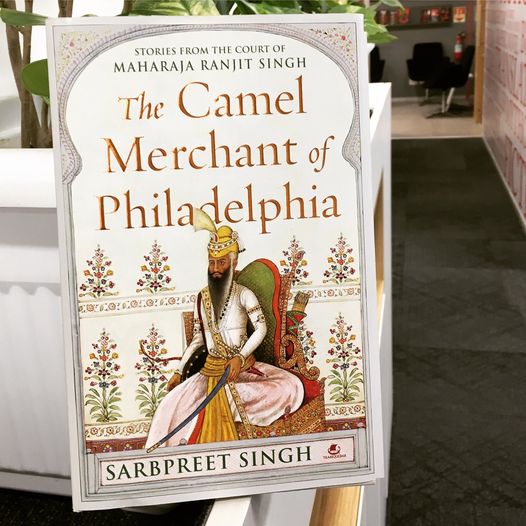
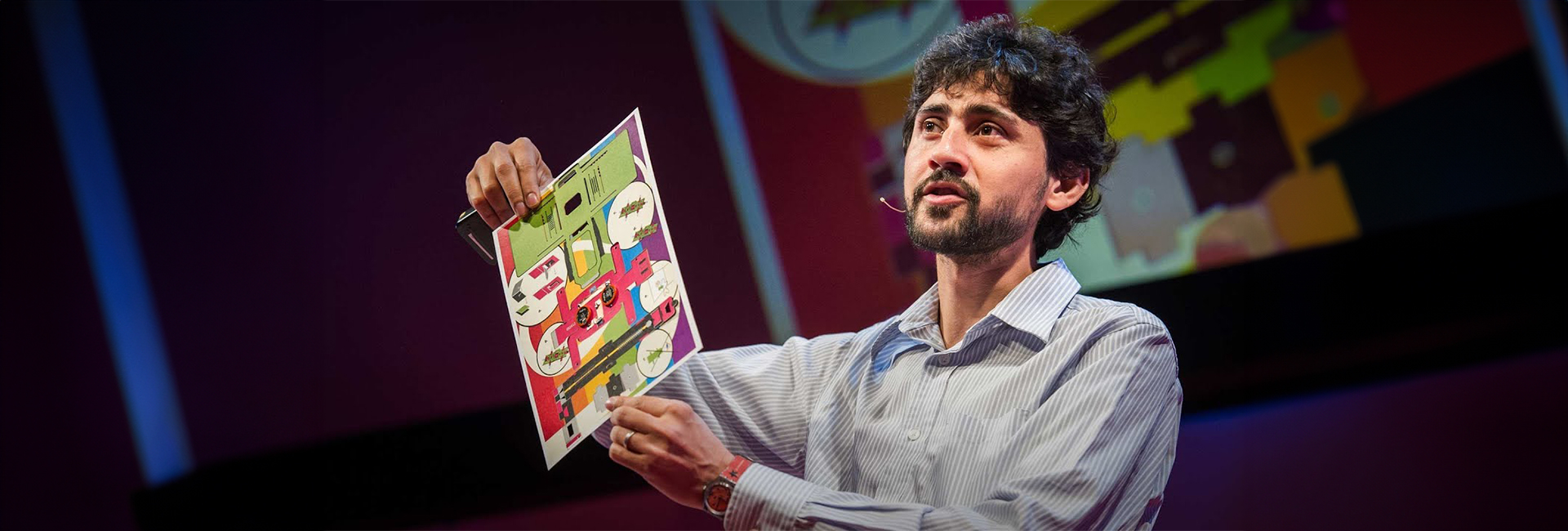
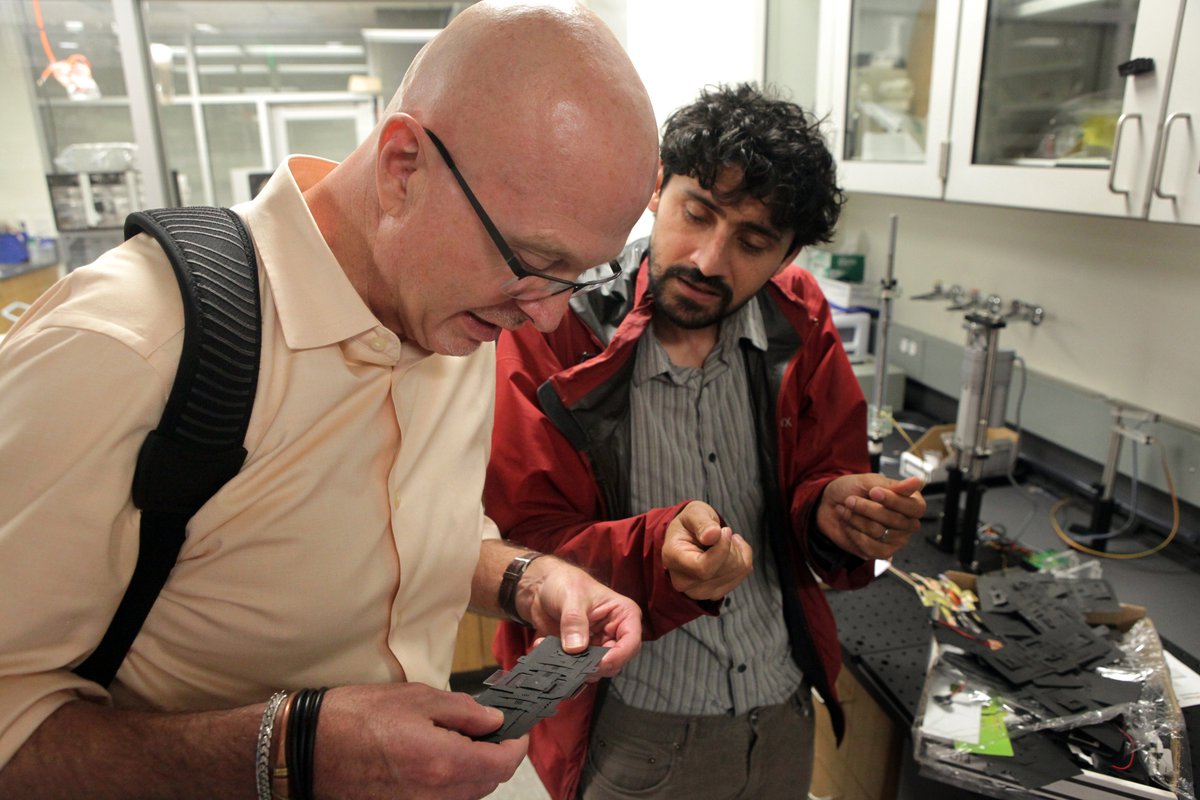
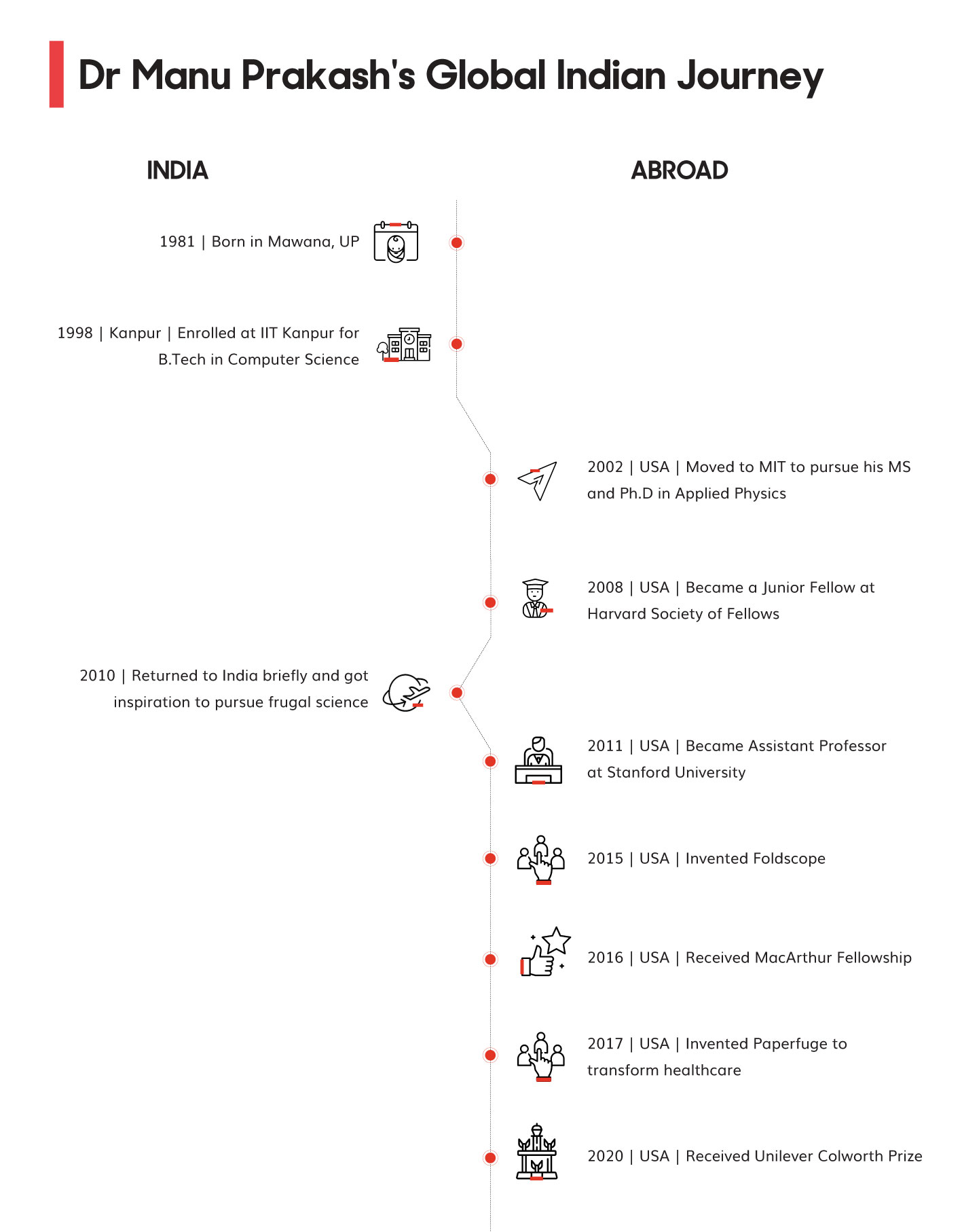
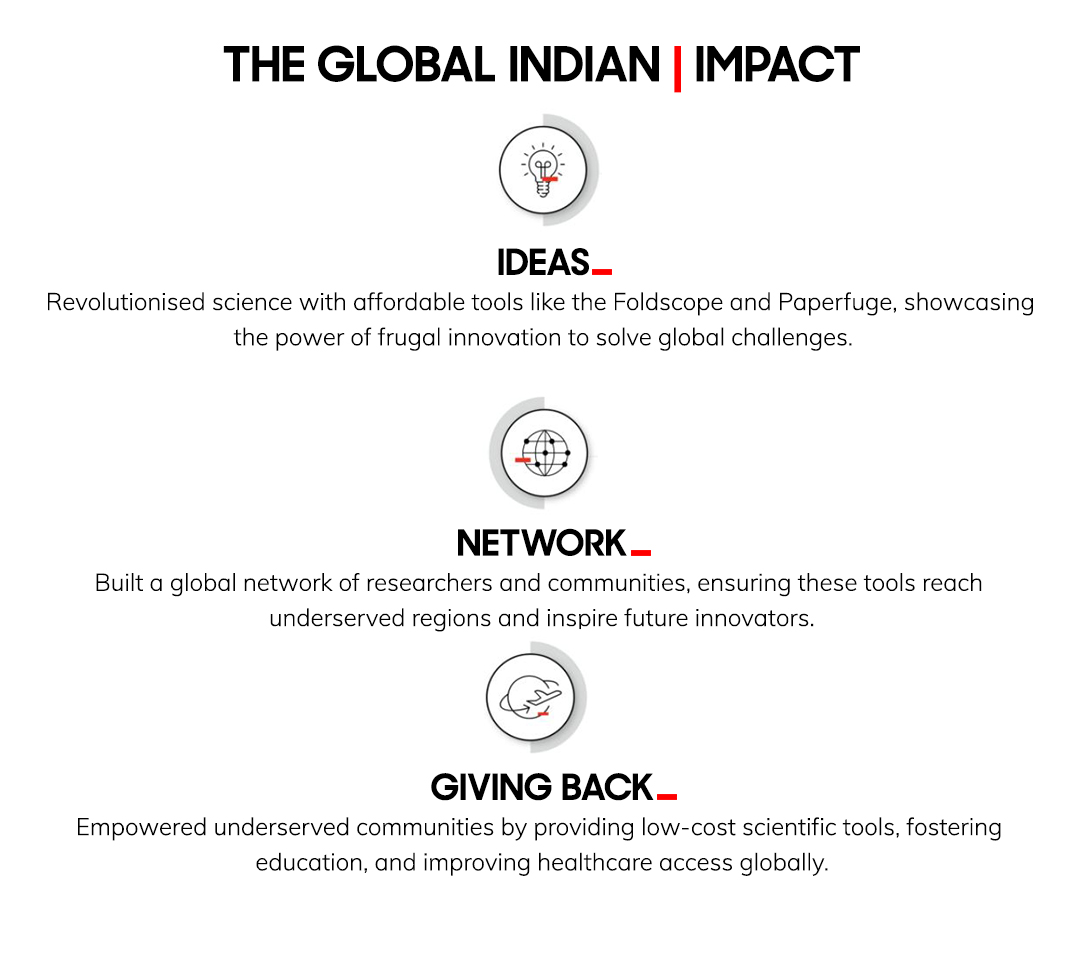

 Ram Charan[/caption]
Ram Charan[/caption]
 Ram Charan at
Ram Charan at